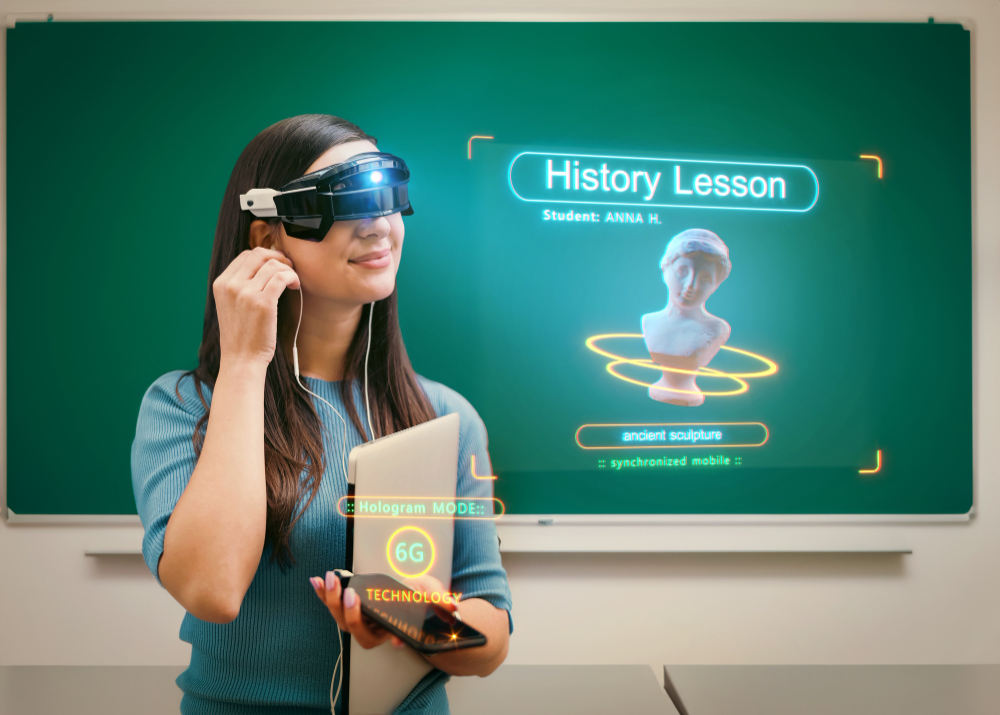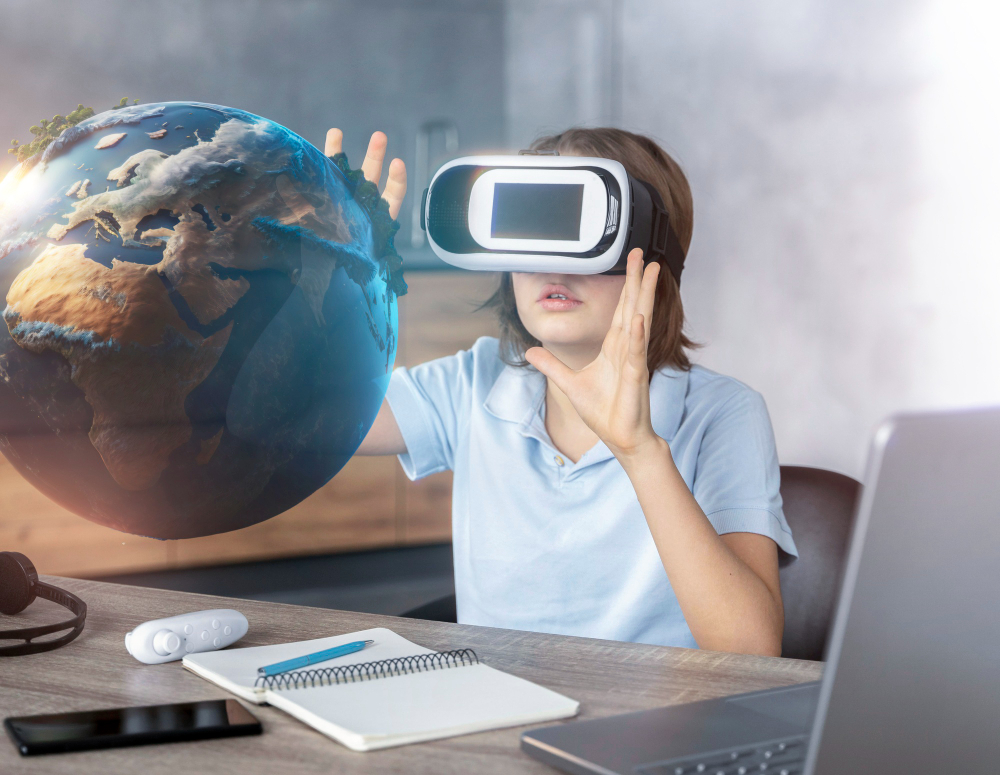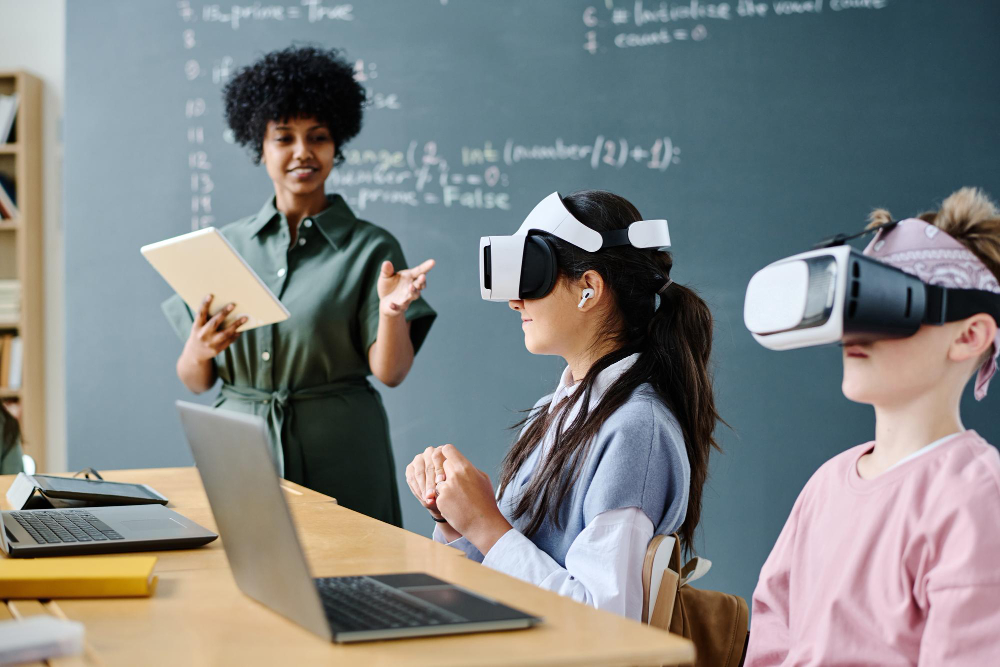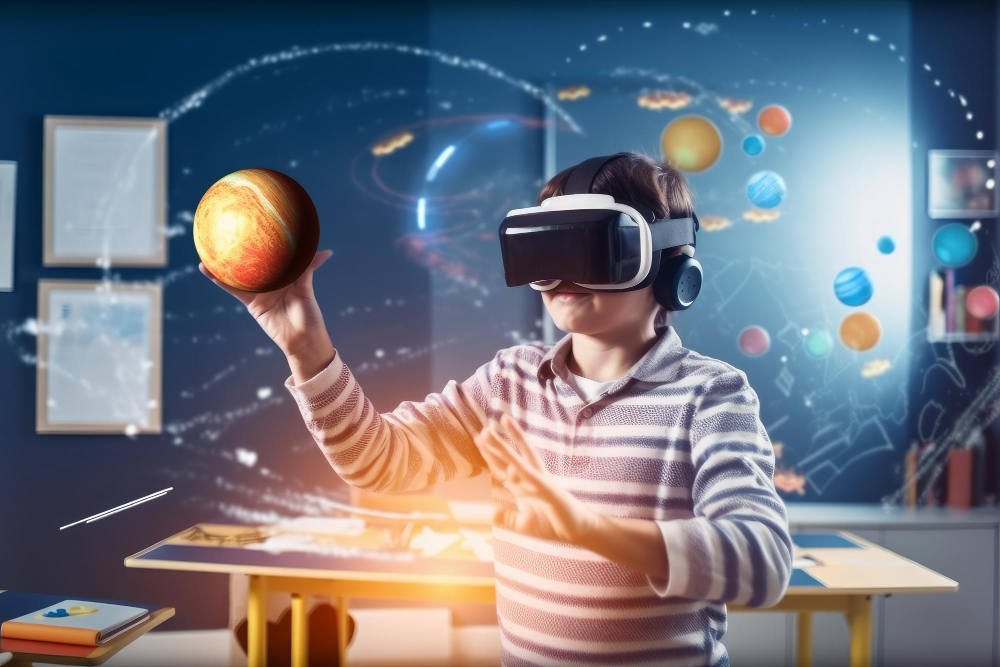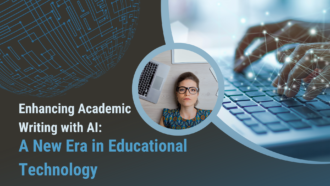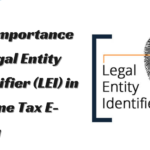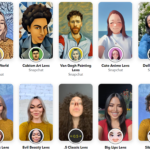11 Examples Of Augmented Reality In Education
- 1 11 Best Examples Of Augmented Reality In Education
- 1.1 Augmenting Textbooks
- 1.2 Interactive Learning Materials
- 1.3 Virtual Field Trips
- 1.4 Science Education
- 1.5 Language Learning
- 1.6 Historical Reconstructions
- 1.7 Astronomy and Space Exploration
- 1.8 Geography and Environmental Studies
- 1.9 Mathematical Visualization
- 1.10 Augmented Reality In Education For Artists
- 1.11 Skills Training
- 2 Benefits of using Augmented Reality In Education
- 2.1 Engagement and Interactivity:
- 2.2 Real-world Applications:
- 2.3 Personalized Learning:
- 2.4 Visualization of Abstract Concepts:
- 2.5 Collaborative Learning:
- 2.6 Accessible Learning Resources:
- 2.7 Increased Motivation:
- 2.8 Cost-Effective Learning Tools:
- 3 Future of Augmented Reality In Education
In the ever-evolving educational technology landscape, Augmented Reality (AR) is a transformative tool, reshaping how knowledge is imparted and experienced. Integrating AR into educational settings has opened up new, dynamic ways of learning, making complex subjects more accessible and engaging. Here, we briefly explore various examples of AR in education, demonstrating how this innovative technology enhances traditional learning methods and creates immersive educational experiences.
11 Best Examples Of Augmented Reality In Education
Augmenting Textbooks
AR technology can transform textbooks by adding 3D models, videos, and animations. For instance, a student reading about the solar system can use AR to access interactive content about each planet, enhancing their understanding through a multi-sensory learning experience.
Interactive Learning Materials
AR can turn traditional learning materials like textbooks into interactive experiences. By scanning textbook pages with an AR app such as Nsflow, students can see 3D models and animations that make learning more engaging and interactive.
Virtual Field Trips
AR enables students to take virtual field trips to historical sites, museums, or outer space. This technology can bring distant, expensive, or inaccessible locations into the classroom, providing a rich learning experience.
Science Education
AR can visualize complex scientific concepts in biology, chemistry, or physics. For instance, students can interact with 3D models of molecules, human anatomy, or physics experiments, enhancing their understanding of abstract concepts.
Language Learning
AR can support language learning by overlaying translations or contextual information on real-world objects. This method can make language learning more immersive and practical.
Historical Reconstructions
AR can recreate historical events or ancient civilizations, allowing students to virtually experience historical settings, making history lessons more engaging and memorable.
Astronomy and Space Exploration
Students can explore the universe using AR, viewing constellations, planets, and galaxies in 3D space. This can make learning about astronomy more interactive and exciting.
Geography and Environmental Studies
AR can help students understand geographical concepts and environmental changes by tangibly visualizing different landscapes and ecosystems.
Mathematical Visualization
AR can be used to visualize and interact with mathematical models and geometrical shapes, making it easier for students to understand complex mathematical concepts.
Augmented Reality In Education For Artists
In art and design education, AR can overlay digital information onto physical artworks, allowing students to see different layers or stages of a piece or experiment with design changes in real time.
Skills Training
Particularly useful in vocational education, AR can simulate real-world scenarios for practical training, such as in healthcare, engineering, or emergency response.
As you can see, the examples of augmented reality in education illustrate the vast potential of this technology in transforming the learning landscape. By making education more interactive, engaging, and tailored to individual learning styles, AR enhances understanding of complex subjects and ignites a newfound enthusiasm for learning among students. As educational institutions continue to embrace this technology, the future of learning looks more vibrant, immersive, and boundless than ever.
Benefits of using Augmented Reality In Education
In this article, we explore the numerous benefits of incorporating Augmented Reality into the educational landscape.
Engagement and Interactivity:
AR brings a new dimension to the learning process by making educational content more engaging and interactive. Traditional textbooks and lectures can be transformed into interactive 3D models, simulations, and animations, captivating students’ attention and fostering a deeper understanding of complex concepts.
Real-world Applications:
One of the key advantages of AR in education is its ability to bridge the gap between theoretical knowledge and real-world applications. Students can explore virtual environments that simulate real-world scenarios, allowing them to apply theoretical concepts in a practical context. This hands-on experience enhances problem-solving skills and critical thinking.
Personalized Learning:
AR enables personalized learning experiences tailored to individual students’ needs and learning styles. Educational content can be adapted to cater to different learning paces and preferences, ensuring that each student receives a customized and effective learning journey.
Visualization of Abstract Concepts:
Complex and abstract concepts that are challenging to grasp through traditional methods can be visualized and simplified through AR. For instance, concepts in science, mathematics, and engineering can be brought to life through interactive 3D models, helping students visualize and understand intricate details.
Collaborative Learning:
AR fosters collaboration among students by creating shared, immersive experiences. Students can work together on projects, solving problems collaboratively in a virtual environment. This not only enhances teamwork skills but also prepares students for the collaborative nature of the modern workplace.
Accessible Learning Resources:
AR provides access to a wealth of digital resources and information, transcending the limitations of physical textbooks. Students can access additional multimedia content, interactive quizzes, and virtual experiments, enriching their learning experience beyond the confines of traditional resources.
Increased Motivation:
The interactive and dynamic nature of AR makes learning more enjoyable, increasing students’ motivation and interest in the subject matter. Gamification elements can be incorporated into educational AR applications, turning the learning process into an engaging and rewarding experience.
Cost-Effective Learning Tools:
While the initial implementation of AR in education may require an investment in technology, in the long run, it can be a cost-effective solution. Digital content can be updated easily, reducing the need for frequent textbook replacements and providing students with up-to-date information.
Future of Augmented Reality In Education
Immersive Learning Environments:
The future of education lies in creating truly immersive learning environments. AR has the potential to transport students to historical events, distant planets, or even inside the human body, providing an unparalleled level of immersion. The integration of advanced AR technologies, such as holographic displays and spatial computing, will redefine the boundaries of traditional classrooms.
Artificial Intelligence Integration:
As Artificial Intelligence (AI) continues to advance, combining AI with AR in education will result in personalized and adaptive learning experiences. Intelligent AR systems will analyze students’ performance data, identify individual learning styles, and dynamically adjust content to cater to each student’s unique needs, ensuring a more efficient and effective learning process.
Widespread Accessibility:
The future of AR in education will witness increased accessibility, with the technology becoming more affordable and widely available. As AR devices become commonplace, students from diverse backgrounds will have equal access to enhanced learning experiences, reducing educational disparities and fostering inclusivity.
Extended Reality (XR):
The evolution of AR goes beyond its current state, incorporating Virtual Reality (VR) and Mixed Reality (MR) to create Extended Reality (XR). This integration will enable even more immersive and interactive educational experiences. XR will empower students to engage with content in ways that simulate real-world interactions, making learning a truly multisensory experience.
Skill Development for the Future:
The future workplace will demand a diverse set of skills, including critical thinking, creativity, and adaptability. AR will play a pivotal role in developing these skills by providing students with real-world simulations, collaborative problem-solving scenarios, and hands-on experiences that prepare them for the challenges of a rapidly evolving job market.
Global Collaborative Learning:
AR will facilitate global collaborative learning experiences, allowing students from different parts of the world to connect and work together in shared virtual spaces. This interconnected approach to education will broaden students’ perspectives, fostering cultural understanding and preparing them for a globalized society.
Continuous Lifelong Learning:
The future of education with AR will extend beyond traditional classroom settings, promoting continuous lifelong learning. AR applications will offer on-the-job training, professional development, and upskilling opportunities, ensuring that individuals can adapt to evolving industries throughout their careers.

